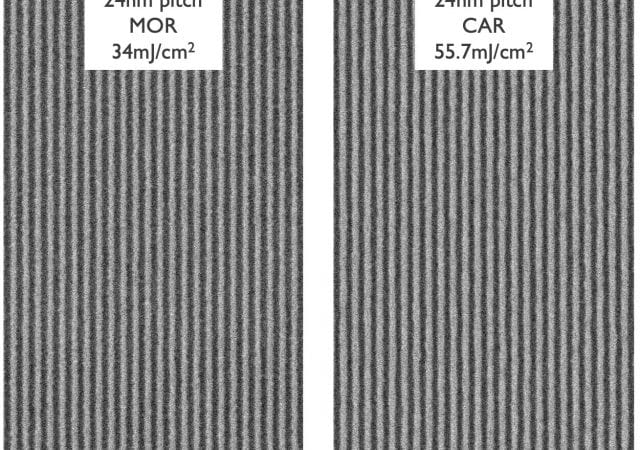Backed by Micron and other founding members such as Advantech, ATP Electronics, Greenliant, Innodisk, Kontron, Mercury Systems and Viking Technology, Micron’s IQ Partner Program promotes design solutions that deliver high-quality, robust and long-lasting products across a breadth of industrial applications such as factory automation, transportation and defense systems.
KLA Introduces New IC Metrology Systems
Today KLA Corporation (NASDAQ: KLAC) announced the Archer™ 750 imaging-based overlay metrology system and the SpectraShape™ 11k optical critical dimension (“CD”) metrology system for integrated circuit (“IC” or “chip”) manufacturing. As each layer in a chip is constructed, the Archer 750 helps verify that pattern features are correctly aligned to features on previous layers, while the SpectraShape 11k monitors the shapes of three-dimensional structures, such as transistors and memory cells, to ensure they remain in spec.
Winfried Kaiser Honored with the SPIE Frits Zernike Award for Microlithography
Winfried Kaiser, head of Product Strategy of ZEISS Semiconductor Manufacturing Technology (SMT) and, as the highest point of his professional career Fellow of the company, has been honored with the 2020 Frits Zernike Award for Microlithography of the International Society for Optics and Photonics (SPIE). Kaiser received the prize during the SPIE Advanced Lithography Conference in San José, California. The award is considered to be the highest honor in microlithography.
Imec Demonstrates 24nm Pitch Lines With Single Exposure EUV Lithography on ASML’s NXE:3400B Scanner
This week, at the SPIE Advanced Lithography Conference, imec and ASML announce a breakthrough in printing narrow 24 nanometer (nm) pitch lines, corresponding to the dimensions of critical back-end-of-line metal layers of a 3 nm technology node process.
D2S Extends GPU-Accelerated Wafer Plane Analysis to EUV Photomasks
D2S, a supplier of GPU-accelerated solutions for semiconductor manufacturing, today announced that its TrueMask® WPA (Wafer Plane Analysis) solution — a GPU-accelerated aerial simulation tool that integrates with mask CD-SEM systems to provide fast, highly accurate and highly repeatable CD metrology for complex and curvilinear mask shapes — has been extended for use with EUV photomasks.
Cartesiam AI Development Environment Brings Artificial Intelligence, Learning and Inference to Everyday Objects
Cartesiam, a company that creates artificial intelligence (AI) software for embedded systems, today announced at the Embedded World conference the availability of NanoEdge™ AI Studio, the first integrated development environment (IDE) that enables machine learning and inference directly on Arm Cortex-M microcontrollers (MCUs).
Micron joins eBeam Initiative
The eBeam Initiative, a forum dedicated to the education and promotion of new semiconductor manufacturing approaches based on electron beam (eBeam) technologies, today announced that Micron has joined the eBeam Initiative. As an industry leader in memory and storage solutions, Micron will provide a unique and important perspective to the educational activities of the eBeam Initiative within the semiconductor photomask and lithography supply chain.
Prophesee and Sony Develop a Stacked Event-Based Vision Sensor
The new sensor and its performance results were announced at the International Solid-State Circuits Conference (ISSCC) held in San Francisco in the United States, starting on February 16, 2020. The new stacked Event-based vision sensor detects changes in the luminance of each pixel asynchronously and outputs data including coordinates and time only for the pixels where a change is detected, thereby enabling high efficiency, high speed, low latency data output. This vision sensor achieves high resolution, high speed, and high time resolution despite its small size and low power consumption.
GlobalSign and Infineon Combine Forces to Strengthen IoT Device Identity
GMO GlobalSign (www.globalsign.com), a global Certificate Authority (CA) and leading provider of identity and security solutions for the Internet of Things (IoT), and semiconductor manufacturer Infineon Technologies AG, today announced a solution that secures, simplifies, and streamlines device enrollment into Microsoft Azure IoT Hub and IoT Hub Device Provisioning Service. The collaboration eases complex device identity integration challenges and delivers a proven path for IoT device security literally from chip to cloud.
IAR Systems Extends Arm Tools Offering With Support for Renesas Electronics’ RA Family
Today, IAR Systems® announces full coverage for the RA Arm® Cortex® microcontrollers (MCUs) from Renesas Electronics Corporation. The complete development toolchain IAR Embedded Workbench® provides powerful code optimizations and comprehensive debugging features in an easy-to-use integrated development environment with excellent worldwide technical support and training.
